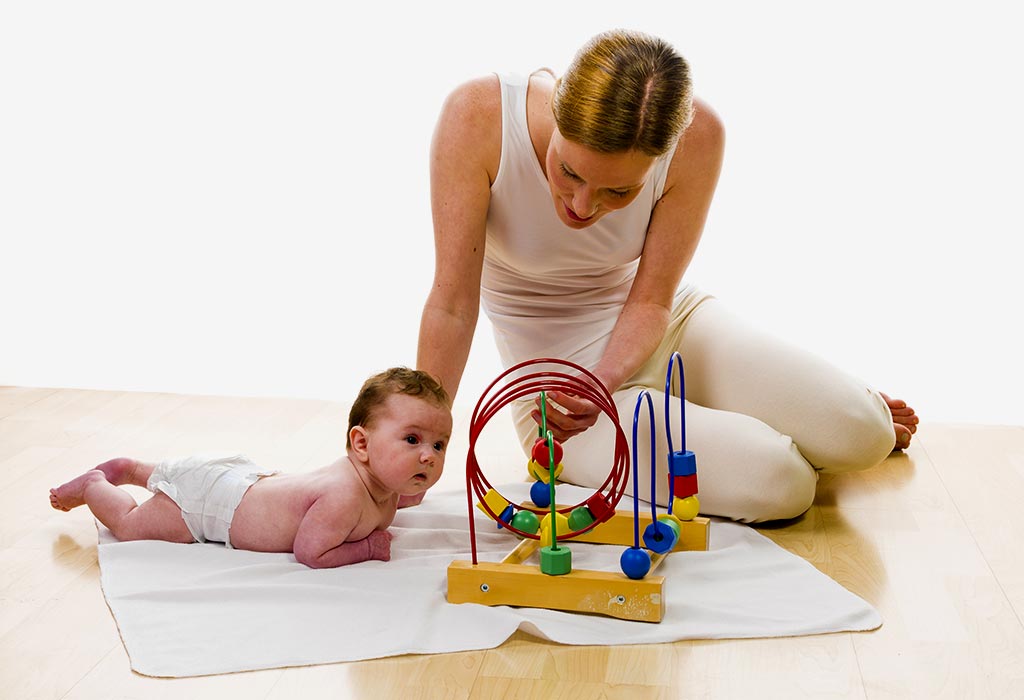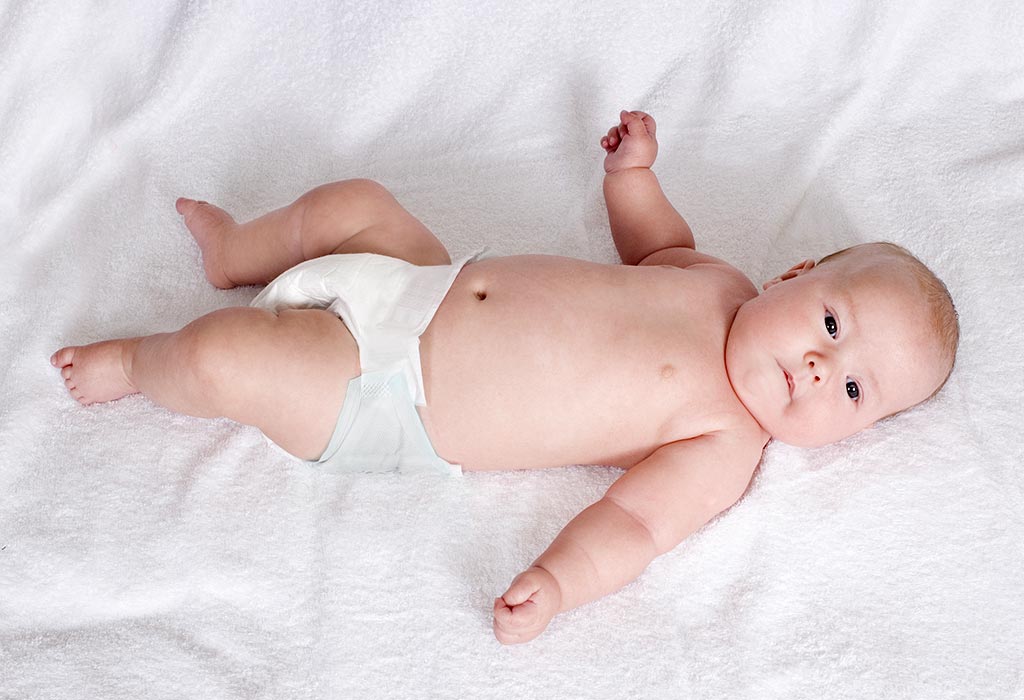When to Try Help Baby to Sit Up


At FirstCry Parenting, our aim is to give you the most elevant, accurate and up to date information.
Every article that we publish, confirms to stringent guidelines & involves several levels of reviews, both from our Editorial team & Experts. We welcome your suggestions in making this platform more useful for all our users. Write in to us at parenting.care@firstcry.com

- At What Age Do Babies Learn to Sit
- What Skills Do Babies Acquire Before They Start Sitting up
- How to Teach Your Baby to Sit Up
- Positions to Help a Baby Learn to Sit
- Things to Avoid While Teaching Your Child to Sit Up
Last Updated on
As a parent, you feel proud when you watch your baby achieving development milestones. And why should you not? These little achievements make him independent in the long run. Your baby must have started cooing and gurgling, he must have also started rolling and enjoying the tummy time. But do you know when a baby starts sitting on his own? It is also a development milestone that you as a parent, may be looking forward to. So, read on to know when a baby starts to sit up and how you can help your baby to sit.
At What Age Do Babies Learn to Sit
Babies learn to sit around six months of age. However, some babies may start sitting early, i.e between 4 and 5 months of age. On the other hand, there are many who may start sitting between 7 and 8 months of age. Therefore, parents need not worry themselves. You must remember that every child grows at his own pace. So, give him time and do not force your child to do something.
What Skills Do Babies Acquire Before They Start Sitting up
Here are some of the skills that your baby may have acquired before he starts sitting on his own:
-
Around Two Months of Age
By 2 months of age, your baby will be able to lift and hold up his head at 45 degrees while lying on his tummy for a few minutes.
-
Around Three Months of Age
By 3 months of age, your baby will lift his head and chest both at 45 degrees while lying on his stomach. His head will be steady and firm than before.
-
Around Four Months of Age
When a baby turns 4 months, he may hold his head up to 90 degrees while lying on his stomach. He may also try to sit using some support.

-
Around Five Months of Age
When your baby turns 5 months, he is most likely to raise his entire upper body while lying on his tummy. He will also be able to roll over. He may even keep his head steady while sitting (with support).
-
Around Six Months of Age
By 6 months of age, your little one will be able to sit with support and may roll on both sides.
-
Around Seven Months of Age
At 7 months, your baby will start sitting up without any support and may even shift his upper body.
-
Around Eight Months of Age
By 8 months of age, he will be able to sit upright without any support. By this time, he may even move his upper body comfortably and stand with support.
How to Teach Your Baby to Sit Up
If you want to help your child to sit up, here are some ways that you can try:
1. Tummy Time
It is very important to give ample amount of tummy time to your baby every day. Lay your baby on his tummy as soon as he is able to take some control of his head, which generally happens around one month of age. Initially, make him lie on your lap or stomach, but as your baby grows and gets stronger, make him lie on a safe surface for some tummy time.
2. Back Time
Just the way tummy time is important for strengthening your baby's neck and upper body muscles, back-time too is necessary for strengthening your baby's abdominal muscles, chest and trunk. Make him lie on his back and give him a toy to play. Soon, you will see that he will start rolling over.

3. Hold Your Baby in Upright Postures (Using Support)
Before your baby actually begins to sit up, make him practice. Your baby not only gets the hang of being in a sitting position, but it also helps his neck and head to gain strength. However, make sure you support your baby's body while doing so.
4. Use Props and Toys
You may use various props and toys to help your baby sit up. Make your baby sit on your lap by using some pillows and cushions, place a toy in front of him and help him reach those toys. You can even make your baby sit in his crib. However, do not leave your baby unattended.
Positions to Help a Baby Learn to Sit
Here are some positions that may help your baby to learn to sit:
1. Sitting on the Lap
Make your baby sit on your lap and keep shifting the support from his upper body to lower body. Move your hand from his chest to low on hips. This position is ideal for babies who are between 3 and 6 months of age.
2. Sitting in a Chair
You can use a chair to help your baby sit up. This works well for babies who have started sitting with support but need to work on their upper body strength. A baby should be made to sit on a chair between 4 and 5 months of age.
3. Sitting on the Floor Between Your Legs
This position is also recommended for 4-5-month-old babies. Your baby has the support of your legs and chest, and in case your baby trips sideways or at the back, he can use his hands for support.
4. Sitting on the Floor with a Pillow
Surround your baby with pillows and place a toy in front of them. Let your baby reach out to grab the toy. Also, adjust the pillow to help him sit up.
5. Tripod Position
Make your baby sit with his legs apart on the floor. Place toys at a reachable distance and let your baby use his trunk to reach to the toy. This position is suggested for babies between the ages of 4 and 6 months.
6. Sitting in a Laundry Basket or a Box
Make your baby sit in a laundry basket or a box and support him from both sides. Also, help your baby balance his body while sitting.
7. Ring Position
Make your baby sit in this position when he is between 6 and 8 months of age. Make your baby sit on the floor with his legs apart but feet joined. This position provides good support and even if your baby trips; he is able to support himself with his arms.
Things to Avoid While Teaching Your Child to Sit Up
Do not make your baby sit on swings or baby seats for longer durations. Your baby should be able to move his body to learn new skills; by making him sit in confined areas for a long time may prove to be a hindrance to his growth and development.
You can try some easy exercises to help your baby sit up but don't go overboard with it. Every baby is different and he may reach developmental milestones at his own pace. So, don't force him into something he is not ready for. If you notice any developmental delays, get in touch with your doctor and seek assistance for the same.
Also Read:How to Make Baby Walk
When to Try Help Baby to Sit Up
Source: https://parenting.firstcry.com/articles/how-to-help-baby-sit-up-well/
0 Response to "When to Try Help Baby to Sit Up"
Post a Comment